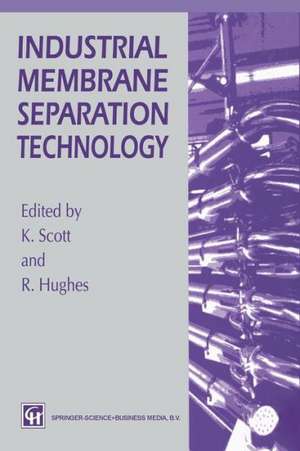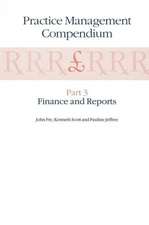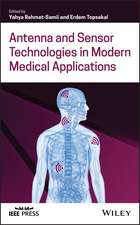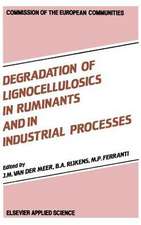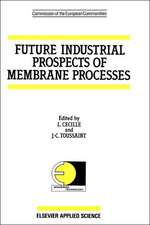Industrial Membrane Separation Technology
Autor K. Scott, R. Hughesen Limba Engleză Paperback – 18 sep 2012
| Toate formatele și edițiile | Preț | Express |
|---|---|---|
| Paperback (1) | 2472.08 lei 43-57 zile | |
| SPRINGER NETHERLANDS – 18 sep 2012 | 2472.08 lei 43-57 zile | |
| Hardback (1) | 2476.04 lei 43-57 zile | |
| SPRINGER NETHERLANDS – 31 dec 1995 | 2476.04 lei 43-57 zile |
Preț: 2472.08 lei
Preț vechi: 3014.73 lei
-18% Nou
Puncte Express: 3708
Preț estimativ în valută:
473.18€ • 514.15$ • 397.73£
473.18€ • 514.15$ • 397.73£
Carte tipărită la comandă
Livrare economică 21 aprilie-05 mai
Preluare comenzi: 021 569.72.76
Specificații
ISBN-13: 9789401042741
ISBN-10: 9401042748
Pagini: 324
Ilustrații: XIII, 305 p.
Dimensiuni: 155 x 235 x 17 mm
Greutate: 0.5 kg
Ediția:1996
Editura: SPRINGER NETHERLANDS
Colecția Springer
Locul publicării:Dordrecht, Netherlands
ISBN-10: 9401042748
Pagini: 324
Ilustrații: XIII, 305 p.
Dimensiuni: 155 x 235 x 17 mm
Greutate: 0.5 kg
Ediția:1996
Editura: SPRINGER NETHERLANDS
Colecția Springer
Locul publicării:Dordrecht, Netherlands
Public țintă
ResearchCuprins
1 Introduction to industrial membrane processes.- 1.1 Introduction.- 1.2 Membrane classification.- 1.3 Conclusions.- 2 Overview of the application of synthetic membrane processes.- 2.1 Classification of membrane separation processes.- 2.2 Membrane processes.- 2.3 Other applications of membranes.- 2.4 Conclusions.- 3 Membrane equipment and plant design.- 3.1 Introduction.- 3.2 Membrane materials.- 3.3 Membrane format and modules.- 3.4 Plant design.- References.- 4 Mass transport and the design of membrane systems.- 4.1 Introduction.- 4.2 Elements of transport phenomena.- 4.3 Fouling and its amelioration.- 4.4 Process design of membrane systems.- References.- 5 Applications in gas and vapour phase separations.- List of symbols.- 5.1 Gas separation.- 5.2 Gas transport through porous membranes.- 5.3 Non-porous membranes.- 5.4 Single-stage permeators and separation factor.- 5.5 Applications of membranes for separation of gases.- 5.6 Operating schemes.- 5.7 Permeator design.- 5.8 Pervaporation.- References.- 6 Applications of cross-flow membrane processes.- 6.1 Introduction.- 6.2 Potable water treatment.- 6.3 Process water treatment.- 6.4 Process applications.- 6.5 Waste water treatment.- 7 Ion-exchange and charge driven processes.- Notation.- 7.1 Electrochemical separators for cells.- 7.2 Membrane and diaphragm materials.- 7.3 Semi-permeable membranes: ion-exchange embranes.- 7.4 Preparation of ion-exchange membranes.- 7.5 Transport in membranes and diaphragms.- 7.6 Membranes in electrolytic cells and fuel cells.- 7.7 Electrodialysis.- 7.8 Electrodialysis cells.- 7.9 Cell stack performance.- 7.10 Polarisation.- 7.11 Membranes and cell design.- 7.12 Applications of electrodialysis.- 7.13 Diffusion dialysis.- 7.14 Salt solution regeneration, recycling and effluent treatment.-7.15 Bipolar membranes.- 7.16 Other membrane processes.- 7.17 Direct membrane cleaning.- 7.18 Electrochemically enhanced cross-flow filtration.- 7.19 Electrochemical membrane gas separations.- 7.20 Electrochemical ion-exchange.- References.- 8 Liquid membranes.- 8.1 Double emulsion membranes.- 8.2 Supported liquid membranes.- 8.3 Membrane contactors.- References.- 9 Membrane reactors.- 9.1 Introduction.- 9.2 Catalytic membrane reactors.- 9.3 Operational aspects of catalytic membrane reactors.- References.
